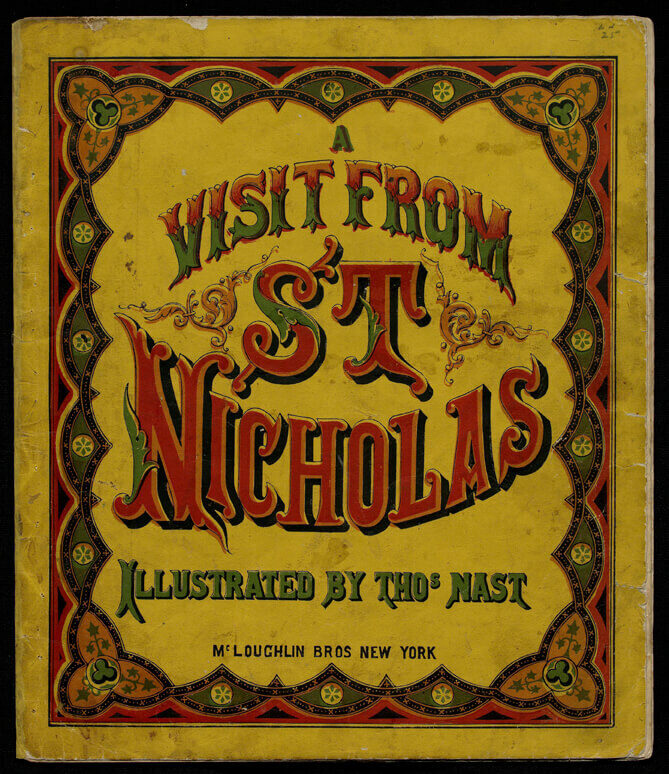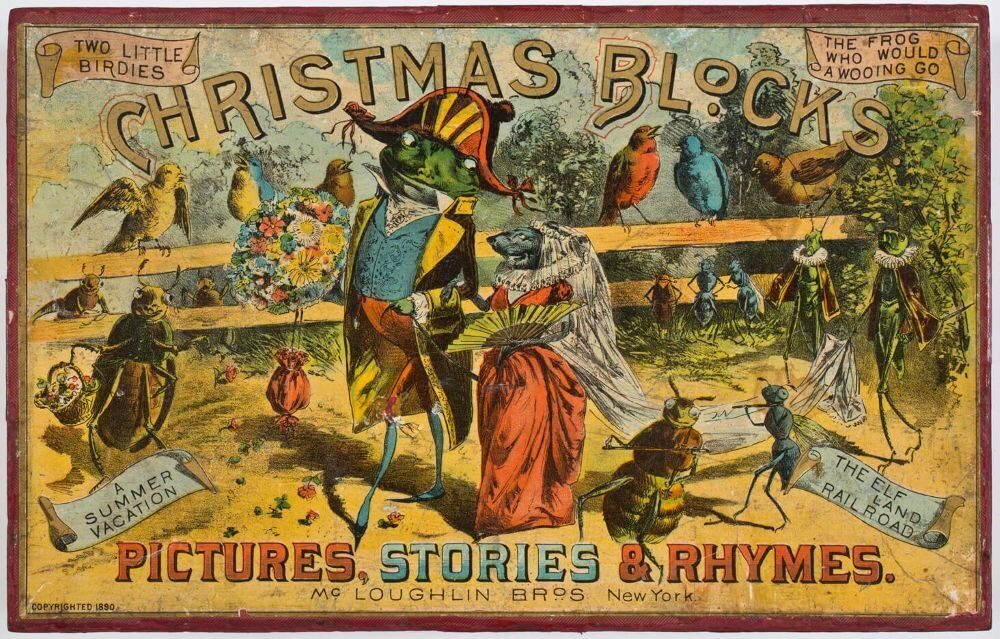It's September – Roll on Christmas!
Even if you’ve never heard the term “Christmas creep”, chances are you’ll be familiar with the concept. September has only just begun and already you’re noticing Christmas-themed merchandise in the mall and on the outer fringes of the high street.
Once upon a time, the traditional start of the holiday season in the United States was the day after Thanksgiving. Nowadays, retailers report that more people each year start their Christmas shopping even before the curtains have come down in the summer.

Content compilation © 2020, by the American Antiquarian Society. All rights reserved. Further reproduction is prohibited without permission. Click to view the original.
This trend has been present for a long time. It was in the mid-nineteenth century that Americans began to embrace Christmas, incorporating customs from elsewhere and building a new tradition that was all their own. Before this time, Christmas had been celebrated to varying degrees around the Christian world, but New Year was the bigger deal. Now Christmas was taking over and becoming less religious, and more commercial in the process.
There were many contributory factors, of course, but prominent were the literary ones. Charles Dickens’s A Christmas Carol played its part, as did Washington Irving’s The Sketch Book of Geoffrey Crayon, Gent. Publishers knew that such books made popular gifts and they began producing titles timed for and aimed at the holiday season market.
AM’s new resource, Children’s Literature and Culture, launched this month, throws further light on the subject.

Content compilation © 2020, by the American Antiquarian Society. All rights reserved. Further reproduction is prohibited without permission. Click to view the original.
The most prominent publisher in the resource – McLoughlin Brothers – was, arguably, the biggest American name in children’s publishing in the late nineteenth and early twentieth centuries, and it played a significant role in shifting the focus from New Year to Christmas. In 1869, the company issued one of its earliest seasonal publications – a version of Clement C. Moore’s A Visit From St Nicholas (first published in 1823 and more widely known as The Night Before Christmas).
To add visuals, the company hired cartoonist extraordinaire Thomas Nast. Since the 1860s, as a staff illustrator at Harper’s Weekly, Nast had been developing his vision of Moore’s idea of Santa Claus as “a right jolly old elf”, conceiving of a merry, heavyset, fur-suited Santa and introducing to the world the image that we know and cherish. McLoughlin quickly grasped the huge visual marketing appeal of Nast’s Santa and, by hiring Nast, demonstrated its business acumen and marketing savvy.
The popularity of their printing of A Visit From St Nicholas made it highly likely that Santa would reappear the following year – and not just high above, in starry skies, on Christmas Eve. Sure enough, McLoughlin continued to popularise him in beautifully illustrated publications such as Santa Claus and His Works, Around the World With Santa-Claus and the Santa Claus Picture Gallery.

Content compilation © 2020, by the American Antiquarian Society. All rights reserved. Further reproduction is prohibited without permission. Click to view the original.
McLoughlin was also a leading game manufacturer and here too, the company led the way. The success of such dazzlingly illustrated Christmas-themed products as Game of the Visit of Santa Claus and Game of the Christmas Jewel encouraged the continuing shift towards the Christmas market, which McLoughlin continued to service and capitalise upon with ever more books and games.
Some (such as Christmas Blocks, for example) had almost nothing to do with Christmas aside from the word ‘Christmas’ or an image of Santa on the covers! Regardless, through their pursuit of seasonal profit and their trailblazing marketing efforts, McLoughlin cemented their impact upon the festive season in America and the wider world.
About the collection
Children's Literature and Culture is out now.
Recent posts

The blog highlights American Committee on Africa, module II's rich documentation of anti-apartheid activism, focusing on the National Peace Accord, global solidarity, and student-led divestment campaigns. It explores the pivotal role of universities, protests, and public education in pressuring institutions to divest from apartheid, shaping global attitudes toward social justice and reform.

This blog examines how primary sources can be used to trace the impact of young voices on society, particularly during pivotal voting reforms in the UK and the US. Explore materials that reveal insights into youth activism, intergenerational gaps, and societal perceptions, highlighting their interdisciplinary value for studying youth culture, activism, and girlhood across history.
